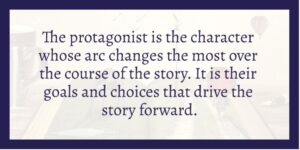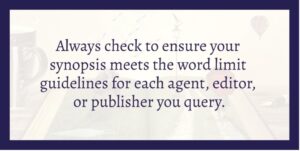
Dual Protagonist Synopses
For many novelists, condensing tens or hundreds of thousands of words of fiction into a synopsis of five hundred words or so (depending on submission guidelines) is a huge task in itself. If you have to write a dual protagonist synopsis (where there are two protagonists instead of one), the task can seem downright monumental.
If you would like more information on how to write a single protagonist synopsis, check out the article How to Write a Book Synopsis on the Fictionary blog.
If, however, your novel has dual protagonists, this adds an extra level of complication that you need to consider. To start, we need to look at the basics of synopsis writing.
What a Synopsis Does
A synopsis is a one-to-two-page summary of the story that:
- Introduces the central characters, central conflict, setting, stakes, and theme
- Outlines all the major plot points of the story (inciting incident; plot point 1; middle plot point; plot point 2; climax), and includes the resolution
- Hooks the reader
- Evokes reader emotion
- Answers every question it raises
- Conveys your voice and writing style and the tone of the book
- Conveys to the reader (agent, editor, or publisher) that you know what story is and that you have a solid story arc
While the term ‘blurb’ is sometimes confused with synopsis, they are different in two important ways:
- A blurb is much shorter than the synopsis, and;
- A blurb does not give away the ending.
Instead, it strategically withholds information and leaves the readers with questions they will want to find the answers to by reading the book. For more information on blurbs, see What is a Book Blurb on the Fictionary blog.

The Parts of a Synopsis
Depending on the word length requirements, and the genre of the book and how much world-building it includes, a synopsis may include the following:
- An introduction and/or overview of 1 to 2 paragraphs that gives the central characters, the central conflict, the ordinary world, the setting, genre, theme, and what’s at stake.
- A paragraph summarizing the inciting incident, where your protagonist’s world changes in a dramatic way
- A paragraph that shows plot point 1, or the point of no return–after this point, the protagonist can never go back to the way things were
- A paragraph showing the middle plot point, where the character goes from reactive to proactive
- A paragraph explaining plot point 2, which may include a false victory and does include an “all in lost” moment
- A paragraph giving the climax of the story
- A paragraph giving away the ending of the novel (the resolution). Depending on length, this could be included with the climax paragraph
How Dual Protagonists Affect Synopsis Writing
A book that has more than one point of view character does not necessarily have more than one protagonist. Remember, the protagonist is the character whose arc changes the most over the course of the story. This is the character whose internal and external goals, and whose choices, drive the story forward.

That being said, the most important thing to remember here is that the synopsis tells the story of the book (the plot), not the individual protagonists.
That doesn’t mean that the protagonists aren’t important to the synopsis. In fact, they are vital in allowing readers to connect to the story, and in evoking reader emotion.
In terms of writing the synopsis, however, for dual protagonists that are pursuing the same goal, also referred to as a combined protagonist, this is pretty straightforward:
You will introduce both characters and then the plot points will be the same. This is the most likely scenario in a dual protagonist novel.
Another possibility, though, is to have two protagonists with parallel plot lines.
This is the more difficult, and more complicated, option.
In this case, these plot lines should be linked, at least thematically. There are a number of possibilities for writing a synopsis in this situation. You can:
- Write the plot/character arcs for each protagonist one after the other
- Work chronologically, alternating paragraphs between the protagonists
- Use a hybrid approach, working mostly chronologically, and following each viewpoint character when it makes most sense for the plot
Because a synopsis should show the major plot points of a story, the third option makes most sense to me.
However, if you are submitting your synopsis as part of a query, you will have a maximum word count to keep in mind. So, in the end, the best option for you will be the one that best showcases and explains your plot while also adhering to stated guidelines.
Genres Where You Might See a Dual Protagonist Synopsis
There are certain genres that are more likely to benefit from dual or multiple protagonists than others.
In particular, these are, “Romantic comedies, buddy stories, and smart book club fiction.”
If you write in one of these genres, remember that just because you can do something doesn’t mean you should.
As you probably already figured out from the previous section, writing a dual protagonist novel, and the novel synopsis, is a complicated endeavor. As Perry says, “Applying this successfully is hard—and definitely not recommended for the beginning writer.”
Of course, that doesn’t mean you can’t—it’s your story, after all. But if you choose to do so, proceed with caution.
Tips for Writing a Dual Protagonist Synopsis
As with many elements related to novel writing—such as prologues, blurbs, and so on—there are practices that fall in and out of favor.
There are some tips for writing a dual protagonist synopsis, though, that hold true:
- Research the guidelines given by the individual, organization, or agency and stick to their word limit. Consider having a few versions of varying lengths ready, just in case.
- Write in the third person, present tense, even if that is not the POV or tense your book is written in. This makes the action feel more immediate.
- Keep your paragraphs short and stick to the main plot(s). This is not the place to include details from any subplots.
- Use strong descriptive and action words wherever possible. For example, instead of saying “he ran quickly” say, “he sprinted.”
- Read your synopsis to yourself to yourself or an audience to check for rhythm, cadence, word choice, and overall readability.
Conclusion
If you have bravely faced the beast that is writing the dual protagonist novel and are now ready to tackle your synopsis, there are some things you need to keep in mind.
The easiest scenario by far, given that the synopsis outlines the plot points of a story, is if those protagonists are pursuing the same goal. In this case, you simply have to introduce two protagonists instead of one, and the rest is basically the same.
If, however, your two protagonists have parallel narratives, writing your synopsis becomes more complicated.
When choosing which way to go about it, remember to choose the option that will best present your synopsis to your query audience while still adhering to word limit guidelines.


